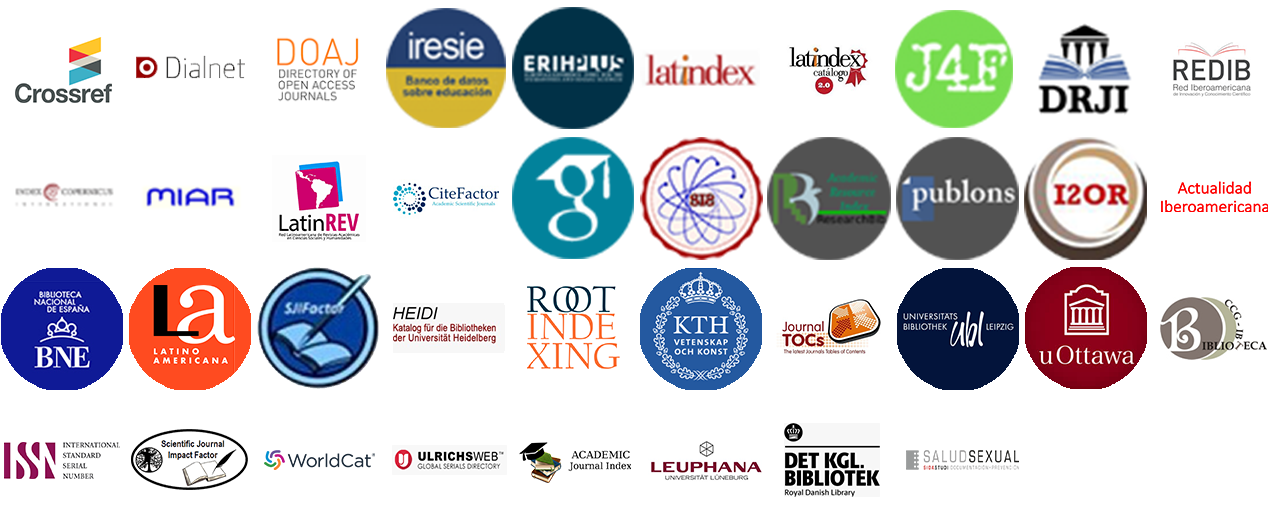Deep numeral models of air quality in the Tula metropolitan area, Hidalgo
DOI:
https://doi.org/10.36825/RITI.13.29.010Keywords:
Air Quality, Deep Learning, Artificial Intelligence, Air Pollution, Environmental MonitoringAbstract
In recent decades, increasing urbanization and industrial development have been a cornerstone of metropolitan development, representing an increase in the production and emission of greenhouse gases. This situation has led to air pollution and an unfavorable environmental situation that could affect ecosystems, the population, and life in general. Therefore, preventive strategies are required. Therefore, two artificial intelligence models were developed to predict air quality in the Tula Metropolitan Area (TMA) using classification and regression algorithms with deep learning neural networks. The CRISP-DM methodology was applied, considering the TMA as the producer of 90% of pollution in Hidalgo. Data understanding and preparation were performed prior to modeling and validating each model. Applying evaluation metrics resulted in an r2 of .99, a loss of 0.088 for the regression model, a .93 accuracy for the classification model, a precision of .88, recall of .79 and F1-score of .81 Both models were able to represent the air quality phenomenon and predict it efficiently.
References
World Health Organization: WHO. (2023). Cambio climático. https://www.who.int/es/news-room/fact-sheets/detail/climate-change-and-health
Benito Lozano, M., Rodríguez González, S. (2023, 16 noviembre). La imperiosa necesidad de programar la asistencia a urgencias, atendiendo al cambio climático y las crisis de calidad del aire. Revista Española de Urgencias y Emergencias, 2, 194-197. https://digital.csic.es/handle/10261/339047
Li, X., Peng, L., Hu, Y., Shao, J., Chi, T. (2016). Deep learning architecture for air quality predictions. Environmental Science and Pollution Research, 23, 22408–22417. https://doi.org/10.1007/s11356-016-7812-9
South China Morning Post. (2021). Air pollution kills 7 million a year, says WHO as it tightens guidelines. https://www.scmp.com/news/world/europe/article/3149735/air-pollution-kills-7-million-year-says-who-it-tightens
Wang, J., Li, J., Wang, X., Wang, J., Huang, M. (2020). Air quality prediction using CT-LSTM. Neural Computing And Applications, 33 (10), 4779-4792. https://doi.org/10.1007/s00521-020-05535-w
Chen, H., Guan, M., Li, H. (2021). Air Quality Prediction Based on Integrated Dual LSTM Model. IEEE Access, 9, 93285-93297. https://doi.org/10.1109/ACCESS.2021.3093430
Zou, X., Zhao, J., Zhao, D., Sun, B., He, Y., Fuentes, S. (2021). Air Quality Prediction Based on a Spatiotemporal Attention Mechanism. Mobile Information Systems, 2021 (1), 1-12. https://doi.org/10.1155/2021/6630944
Hamami, F., Dahlan, I. A. (2022). Air Quality Classification in Urban Environment using Machine Learning Approach. IOP Conference Series Earth and Environmental Science. https://doi.org/10.1088/1755-1315/986/1/012004
Chakma, A., Vizena, B., Cao, T., Lin, J., Zhang, J. (2017). Image-based air quality analysis using deep convolutional neural network. IEEE International Conference on Image Processing (ICIP). Beijing, China. http://doi.org/10.1109/ICIP.2017.8297023
Ruiz Muñoz, G. F., Vasco Delgado, J. C. (2025). Integración de las tecnologías de la información y la comunicación (TIC) e inteligencia artificial (IA) en la formación docente. Revista de Investigación en Tecnologías de la Información, 13 (29), 60-70. https://doi.org/10.36825/RITI.13.29.006
Zhang, M., Wu, D., Xue, R. (2021). Hourly prediction of PM2.5 concentration in Beijing based on Bi-LSTM neural network. Multimedia Tools Applications, 80, 24455–24468. https://doi.org/10.1007/s11042-021-10852-w
Qiu, W., Zhou, Y., He, H., Wang, B., Mu, G., Zhou, M., Ma., J., Zhang, Z., Cao, L., Xiao, L., Yuan, J., Chen, W. (2021). Short-term effects of air pollution on liver function among urban adults in China. Atmospheric Environment, 245. https://doi.org/10.1016/j.atmosenv.2020.118011
Zhao, F., Liang, Z., Zhang, Q., Seng, D., Chen, X. (2021). Research on PM2.5 Spatiotemporal Forecasting Model Based on LSTM Neural Network. Computational Intelligence and Neuroscience, 2021 (1), 1-10. https://doi.org/10.1155/2021/1616806
Wang, J., Li, X., Jin, L., Li, J., Sun, Q., Wang, H. (2022). An air quality index prediction model based on CNN-ILSTM. Scientific Reports, 12 (8373), 1-16. https://doi.org/10.1038/s41598-022-12355-6
Han, Y., Zhang, Q., Li, V. O. K., Lam, J. C. K. (2021). Deep-AIR: A Hybrid CNN-LSTM Framework for Air Quality Modeling in Metropolitan Cities. arXiv preprint. https://arxiv.org/abs/2103.14587
Zhang, Q., Lam, J. C. K., Li, V. O. K., Han, Y. (2020). Deep-AIR: A Hybrid CNN-LSTM Framework for Fine-Grained Air Pollution Forecast. arXiv preprint. https://arxiv.org/abs/2001.11957
Tiwari, A., Gupta, R., Chandra, R. (2021). Delhi air quality prediction using LSTM deep learning models with a focus on COVID-19 lockdown. arXiv preprint. https://arxiv.org/abs/2102.10551
Sarmiento Sánchez, C. A. (2024). Predicción de Contaminantes Atmosféricos en Bogotá utilizando Redes LSTM. Ingenio Tecnológico. Revista de Ingeniería, 6 (E051), 1-26. https://ingenio.frlp.utn.edu.ar/index.php/ingenio/article/view/108
Mengara Mengara, A. G., Park, E., Jang, J., Yoo, Y. (2022). Attention-Based Distributed Deep Learning Model for Air Quality Forecasting. Sustainability, 14 (6), 1-34. https://doi.org/10.3390/su14063269
Buestán Andrade, P. A., Carrión Zamora, P. E., Chamba Lara, A. E., Pazmiño Piedra, J. P. (2025). A comprehensive evaluation of ai techniques for air quality index prediction: RNNs and transformers. Ingenius, (33), 60-75. https://doi.org/10.17163/ings.n33.2025.06
Zaini, N. A., Ean, L. W., Ahmed, A. N., Malek, M. A. (2022). A systematic literature review of deep learning neural network for time series air quality forecasting. Environmental Science and Pollution Research, 29 (4), 4958-4990. https://doi.org/10.1007/s11356-021-17442-1
Abirami, S., Chitra, P. (2021). Regional air quality forecasting using spatiotemporal deep learning. Journal of Cleaner Production, 283. https://doi.org/10.1016/j.jclepro.2020.125341
Khan, H., Tso, J., Nguyen, N., Kaushal, N., Malhotra, A., Rehman, N. (2024). Novel Approach for Predicting the Air Quality Index of Megacities through Attention-Enhanced Deep Multitask Spatiotemporal Learning. arXiv preprint. https://arxiv.org/abs/2407.11283
Méndez, M., Merayo, M. G., Núñez, M. (2023). Machine learning algorithms to forecast air quality: a survey. Artificial Intelligence Review, 56, 10031–10066. https://doi.org/10.1007/s10462-023-10424-4
Downloads
Published
How to Cite
Issue
Section
License
Copyright (c) 2025 Revista de Investigación en Tecnologías de la Información

This work is licensed under a Creative Commons Attribution-NonCommercial 4.0 International License.
Esta revista proporciona un acceso abierto a su contenido, basado en el principio de que ofrecer al público un acceso libre a las investigaciones ayuda a un mayor intercambio global del conocimiento.
El texto publicado en la Revista de Investigación en Tecnologías de la Información (RITI) se distribuye bajo la licencia Creative Commons (CC BY-NC
 ), que permite a terceros utilizar lo publicado citando a los autores del trabajo y a RITI, pero sin hacer uso del material con propósitos comerciales.
), que permite a terceros utilizar lo publicado citando a los autores del trabajo y a RITI, pero sin hacer uso del material con propósitos comerciales.



